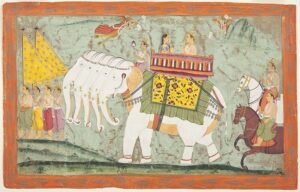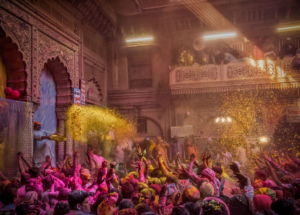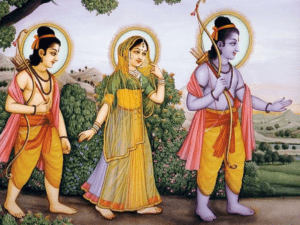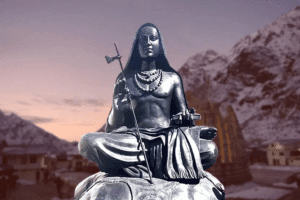
The Samudra Manthan
The Samudra Manthan, or the Churning of the Ocean of Milk, is one of the most captivating and symbolic episodes in Hindu mythology. It is a tale from ancient scriptures that illustrates the eternal struggle between good and evil, the pursuit of immortality, and the collaborative effort between opposing forces to achieve a greater good. This story is primarily found in the Bhagavata Purana, Vishnu Purana, and Mahabharata.
In Hindu cosmology, the universe is cyclical, undergoing creation, preservation, and dissolution repeatedly. The Devas and Asuras are in constant conflict, representing the forces of good and evil. At the heart of the Samudra Manthan story is the quest for Amrita, the nectar of immortality, which both Devas and Asuras desperately desire.
The Need for the Churning
The story begins with a curse placed on the Devas by the sage Durvasa, which causes them to lose their strength and power. Weakened and vulnerable, they approach Lord Vishnu for help. Vishnu advises them to churn the cosmic ocean of milk, known as Kshira Sagara, to obtain Amrita, which will restore their strength and ensure their supremacy over the Asuras. However, the task is monumental and cannot be accomplished by the Devas alone. Vishnu suggests a temporary alliance with the Asuras, promising to share the nectar.
The Preparation
To churn the ocean, a massive churning rod and rope are required. Mount Mandara, a cosmic mountain, is chosen as the churning rod, and the serpent king Vasuki becomes the churning rope. The Devas and Asuras pull Vasuki from either side, creating a tug-of-war that churns the ocean.
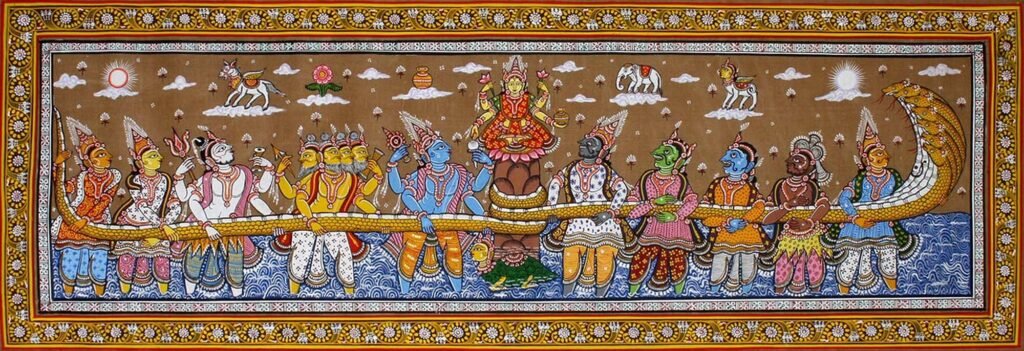
The Churning Process
As the churning begins, a series of powerful and miraculous events unfold:
- Halahala: The first substance to emerge is a deadly poison called Halahala, which threatens to destroy the universe. Lord Shiva, in an act of supreme sacrifice, consumes the poison to protect creation. His throat turns blue, earning him the name Neelkanth.

- Emergence of Treasures: As the churning continues, several divine beings and treasures emerge from the ocean, including:
- Kamadhenu: The wish-fulfilling cow.
- Airavata: The white elephant.
- Kaustubha: A precious gemstone.
- Parijat: A celestial tree.
- Apsaras: Celestial maidens.
- Chandra: The moon.
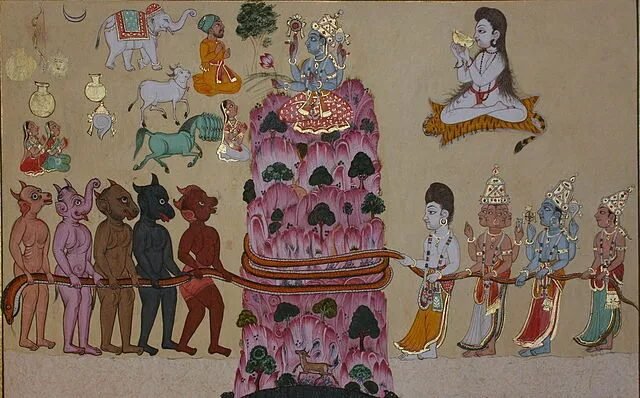
- Dhanvantari and Amrita: Finally, Dhanvantari, the divine physician, emerges holding the pot of Amrita. The sight of the nectar ignites a fierce battle between the Devas and Asuras, each vying for its possession.
The Deception and Victory
Despite their initial cooperation, the Asuras seize the pot of Amrita, intending to keep it for themselves. At this critical moment, Lord Vishnu takes the form of Mohini, an enchanting damsel. Mesmerized by her beauty, the Asuras agree to let Mohini distribute the nectar. However, Mohini cunningly serves the Amrita only to the Devas, ensuring their victory.

One Asura, Rahu, disguises himself as a Deva and consumes a drop of the nectar. However, before it can take effect, Vishnu beheads him. Rahu’s head, having tasted the nectar, becomes immortal and transforms into the shadow planet that causes eclipses.
Symbolism and Lessons
The Samudra Manthan is rich in symbolism and offers several moral and philosophical lessons:
- Cooperation between Opposites: The collaboration between the Devas and Asuras, despite their enmity, highlights the need for cooperation to achieve common goals, even among adversaries.
- Persistence and Sacrifice: The story underscores the importance of perseverance in the face of challenges and the willingness to make sacrifices for the greater good, as demonstrated by Lord Shiva.
- Good vs. Evil: The ultimate victory of the Devas signifies the triumph of good over evil, a recurring theme in Hindu mythology.
- Deception in Service of Dharma: Vishnu’s use of deception as Mohini to ensure the rightful distribution of Amrita to the Devas shows that cleverness and strategy are sometimes necessary to uphold dharma (righteousness).
The Samudra Manthan is more than just a mythological tale; it is a profound allegory that resonates with the complexities of life and the constant interplay of forces that shape the universe. Its lessons on cooperation, sacrifice, and the pursuit of higher goals continue to inspire and guide millions of people in their spiritual and everyday lives.

